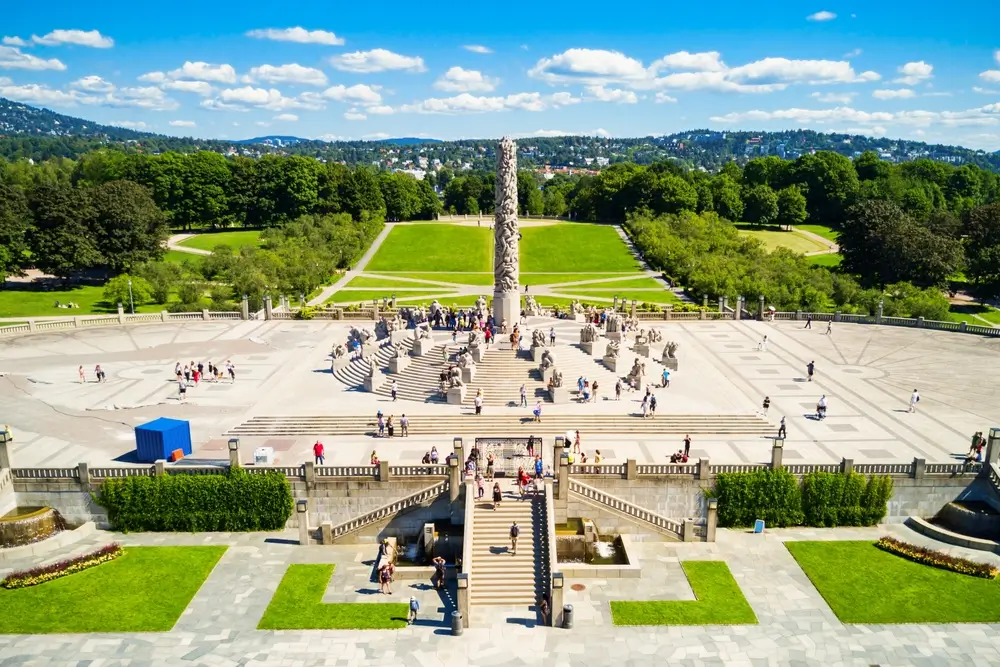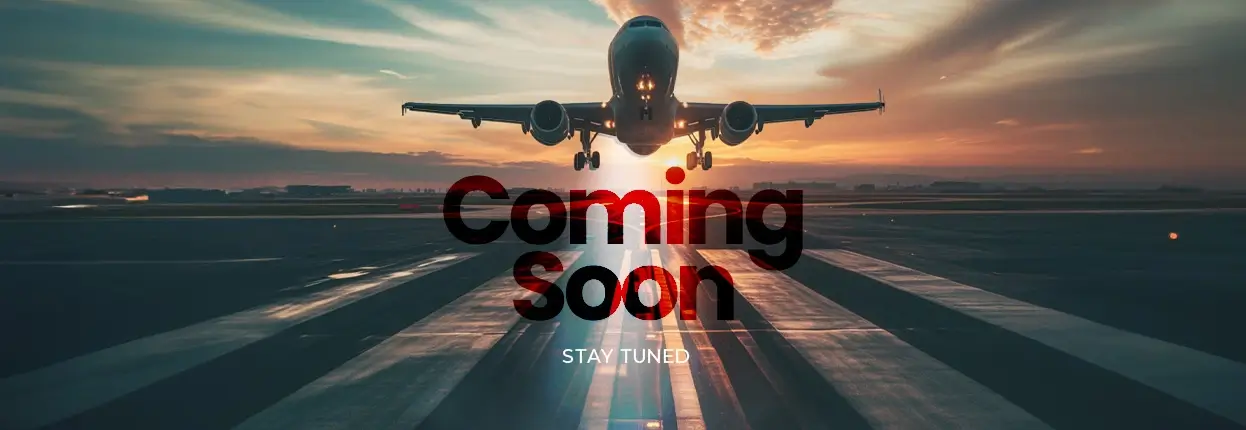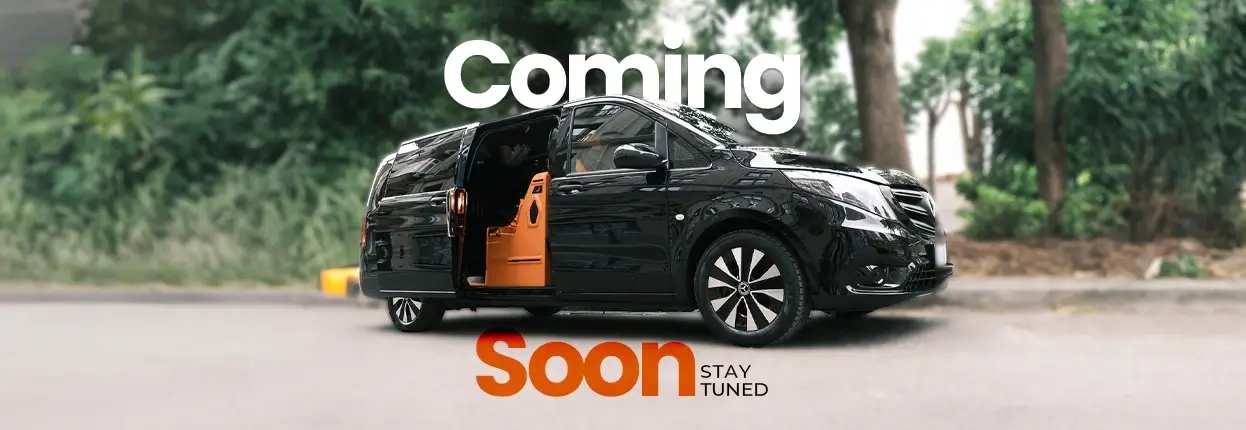Oslo
Oslo Guide de la ville

Oslo is the vibrant and historical capital of Norway. The city stands out for its magnificent natural landscapes, colorful cultural heritage, and innovative gastronomy. In addition to world-famous landmarks such as the Viking Ship Museum, the Munch Museum, and the Vigeland Sculpture Park, visitors are also drawn to Karl Johans Street and the Oslo Opera House in the city center.
In terms of gastronomy, Oslo's restaurants offer a variety of flavors from around the world. It is easy to find fresh and delicious seafood in the city, which is renowned for its seafood offerings. There are also numerous opportunities to enjoy street food and traditional Norwegian cuisine. To discover Oslo's unique atmosphere, visitors can explore the city's parks and natural areas. Walking along the Akerselva River and exploring the Nordmarka Forest provide excellent opportunities to appreciate the natural beauty that Oslo has to offer. Oslo offers an unforgettable travel experience with its natural beauty and rich cultural and gastronomic heritage.
Things To Know Before Going To Oslo
- Most businesses in Oslo are closed on Sundays. Plan your shopping and activities accordingly.
- When visiting a public sauna in Norway, keep your pants or towels on. Unlike German saunas, Norwegian saunas require you to stay covered.
- Trams and other rail transport in Oslo do not stop for pedestrians unless there is a red stop light. Always wait for a clear signal before crossing the tracks to avoid accidents.
- Always let people off public transport before you board. This helps maintain a smooth and orderly flow for everyone.
- Norway has three emergency numbers: 110 for fire emergencies, 112 for police assistance, 113 for medical emergencies. You can call any of these numbers and be transferred to the appropriate service if needed.
- At some bus stops, you need to make a small wave to signal the bus driver to stop. If you don't, the driver may pass by without stopping.
Oslo Tips From Locals
- Norwegians are typically quite friendly when you ask for something, but we are generally reserved people, whether in Oslo or anywhere in Norway.
- Norwegians are socially and culturally inclined to avoid inconveniencing others, which leads them to refrain from interacting with strangers or individuals they are not familiar with.
- Don't be afraid to trust people - it's normal to leave keys at the kiosk if you don't want to carry them.
Where is Oslo?
Oslo is the capital city of Norway, located in Northern Europe. It is situated at the head of the Oslofjord in the southeastern part of the country. Oslo is bordered by forests and hills and lies in close proximity to both natural landscapes and the sea, making it a city known for its green spaces and outdoor activities.
Where To Stay In Oslo?
Here’s a quick table of which areas in Oslo are great for tourists:
District | Best For | Best Attractions | Average Daily Cost |
| Sentrum | Culture & History | Oslo Cathedral, Akershus Fortress, Karl Johans Gate | $70 - $120 |
| Grünerløkka | Trendy Shops & Cafés | Mathallen Food Hall, Grünerløkka Park, Vulkan Beehive | $50 - $90 |
| Frogner | Museums & Parks | Vigeland Sculpture Park, Frogner Park, Oslo City Museum | $60 - $100 |
| Majorstuen | Shopping & Nightlife | Bogstadveien shopping street, Marienlyst Park, Oslo Mikrobryggeri | $60 - $110 |
| Gamle Oslo | Historical Sites | Oslo Opera House, Medieval Park, Barcode Project | $50 - $100 |
Best Hotels in Oslo
Oslo offers a variety of accommodation options for every budget. Here is a table we recommend for visitors based on different preferences:
| Hotel | District | Affordability | Why To Stay There? |
| Karl Johan Hotel | Sentrum | High | Historic hotel located on Karl Johans Gate. Walking distance to major attractions like the Royal Palace. |
| Saga Apartments | Frogner | Moderate | Comfortable apartments with kitchen facilities. Close to Vigeland Sculpture Park and Frogner Park. Ideal for longer stays. |
| Central City Apartments | Gamle Oslo | Budget to Moderate | Budget-friendly apartments with modern amenities. Convenient location near Oslo Central Station. |
| Quality 33 | Økern | Moderate | Modern hotel with conference facilities. Good for business travelers. |
| Bogstad Camping | Bogstad | Budget | Affordable camping option close to nature. Great for outdoor activities and families. |
| Clarion Collection Folketeateret | Sentrum | High | Stylish hotel with complimentary breakfast and evening meal. Located near Oslo's main shopping streets. |
Find best hotels in Oslo here!
Places To Visit In Oslo
Here’s the list of some top Oslo attractions you shouldn’t miss during your visit:
- Akershus Fortress: A historic landmark in Sentrum offering panoramic views of the Oslo Fjord, with guided tours available to explore its medieval architecture and rich history.
- The Polar Exploration Museum: Located in Bygdøy, it showcases Norway's polar exploration legacy with exhibits on explorers like Roald Amundsen and their pioneering expeditions.
- Holmenkollen Ski Museum: Situated in Holmenkollen, it's the world's oldest ski museum inside the iconic Holmenkollen Ski Jump, offering a comprehensive exploration of ski history and stunning views of Oslo.
- Munch: Found in Bjørvika, dedicated to Edvard Munch's works like "The Scream," amidst modern architectural aesthetics and scenic waterfront surroundings.
- Natural History Museum: Positioned in Tøyen, it offers botanical wonders, geological exhibits, and dinosaur displays, providing a captivating exploration of natural sciences.
- Nobel Peace Center: Located in Aker Brygge, it celebrates Nobel Peace Prize laureates' contributions to global peace with interactive exhibits housed within a historic railway station.
- Norsk Folkemuseum: Situated in Bygdøy, it offers insight into Norwegian cultural heritage through traditional buildings and folk art, providing a firsthand experience of the country's rich history.
- The National Museum: Found in Sentrum, Norway's premier destination for art, architecture, and design enthusiasts, showcasing classic to contemporary works, providing a comprehensive overview of Norwegian artistic expression.
Is Oslo Safe?
Oslo is generally a very safe city for walking alone at night. Incidents of serious crimes, violence, or sexual crimes are relatively low. You can feel safe walking the streets of Oslo at night, even as a solo traveler.
Is Oslo Expensive To Visit?
Oslo is considered an expensive city to visit. It has been repeatedly named as one of the most expensive cities in the world for travelers. The cost of visiting Oslo includes factors such as accommodation, food, transportation, and attractions. For instance, a two-week trip to Oslo can cost approximately $1,911 for one person and $3,822 for two people.
Currency & Exchange in Oslo
The official currency in Oslo is the Norwegian Krone (NOK). ATMs offer good exchange rates, and credit/debit cards are widely accepted. Mobile payment apps and contactless payments are common and convenient.
Spoken Languages in Oslo
The primary language spoken in Oslo is Norwegian. However, there are also other languages spoken in Oslo. Here is a list of languages spoken in Oslo:
- Norwegian: Approximately 95%
- English: Approximately 80%
- Swedish: Approximately 50%
- Danish: Approximately 40%
- Other languages (such as Somali, Urdu, Arabic, Polish, etc.): Approximately 20-30%
How Many Days Are Enough To Visit Oslo?
If you want to experience everything Oslo has to offer, you should plan to spend 2 to 3 days in the city. 2 days provide enough time to see the major sites, but we recommend planning for 3 days.
What To Do in Oslo?
- Experience Hvervenbukta Beach and treat yourself to delightful buns and cakes at Anne på Landet. Follow it up with a scenic walk along the shore and convenient bus transportation back to the city center.
- Take a tram ride to Holtet and indulge in delicious pizza at åpent bakeri, available from 4pm on selected days. Then, enjoy a leisurely walk down Kongsveien back to the city.
- Explore a diverse range of dining options including Illegal Burger, Oslo Street Food, and kebab in Torggata. For a more unique culinary experience, consider Golden Chimp, Chez Colins, or Arakataka. Sushibar + Wine offers a blend of classic and innovative sushi choices.
- Quench your thirst at Pigalle or Bortenfor for a laid-back atmosphere, or venture to Himkok or Torggata Botaniske for a distinctive drink experience. Enjoy classic cocktails at Bettola, or opt for a more formal setting at Kastellet near Slottsparken.
When Is The Best Time To Stay In Oslo?
Between June and August is the best time to visit due to the warmer weather and significantly longer daylight hours. Like many Scandinavian cities, Oslo comes alive during the summer with a variety of outdoor events and festivals.
What To Pack For Your Oslo Trip?
- Winter (December - February)
- In winter, pack a heavy, insulated winter coat, thermal layers, wool or fleece sweaters, insulated and waterproof boots, warm gloves, hats, and scarves. Bring insulated or lined pants, thick wool socks, and lip balm and moisturizer to protect your skin from the cold, dry air.
- Spring (March - May)
- For spring, bring a medium-weight jacket, long-sleeve shirts and sweaters for layering, comfortable jeans or pants, and waterproof shoes. Don't forget an umbrella or raincoat, a lightweight scarf and hat, and sunglasses for sunny days.
- Summer (June - August)
- In summer, pack lightweight clothing such as T-shirts, shorts, and lightweight pants. Include a sweater or light jacket for cooler evenings, comfortable walking shoes, and a rain jacket for summer showers. Swimwear, sunglasses, a hat, and sunscreen are also essential.
- Autumn (September - November)
- For autumn, bring a medium to heavy jacket, long-sleeve shirts, sweaters, light thermal layers, and comfortable jeans or thicker pants. Waterproof boots or shoes, an umbrella or raincoat, a scarf, hat, and light gloves are necessary for the cooler and wetter weather.
What To Eat at Oslo?
Here are the must-try food when you travel to Oslo:
- Farikal: It is a hearty mutton and cabbage stew served with boiled potatoes.
- Pinnekjøtt: It is a traditional Norwegian Christmas dish prepared with racks of lamb or mutton, which are brined, air-dried, or smoked. It is served with mashed or boiled potatoes, pureed Swedish turnip, and various salads.
- Lutefisk: It is a Scandinavian dish made from dried whitefish served with boiled potatoes, mashed green peas, melted butter, and pieces of dried bacon.
- Fiskesuppe: It is a popular fish soup known for its creamy texture and buttery flavor.
- Lapskaw: It is a traditional stew originating from Norway. This stew is usually made with a combination of beef, onions, potatoes, carrots, celery, rutabaga, bay leaves, thyme, salt, and pepper.
Oslo Nightlife
Oslo, Norway, offers a vibrant and diverse nightlife scene, blending traditional Norwegian culture with modern trends. Here are some of the best places to spend your night in Oslo:
- Blå: One of Oslo's most iconic music venues, known for hosting a wide range of live performances, concerts, and club nights.
- The Villa: A popular underground nightclub with a focus on electronic music, offering a vibrant and energetic atmosphere.
- Fuglen: A unique bar and café that transforms into a lively cocktail bar in the evening, known for its vintage decor and creative drinks.
- Jaeger: A multi-room nightclub with a high-energy atmosphere, renowned for its electronic music scene and renowned DJs.
- Revolver: A casual bar and music venue with a laid-back vibe, featuring live rock music and weekend DJ sets.
- Tilt: A retro-themed bar and arcade that offers a fun mix of pinball machines, arcade games, and a lively bar scene.
- Lawrence: A stylish cocktail bar known for its sophisticated ambiance, expertly crafted cocktails, and live DJ performances.

